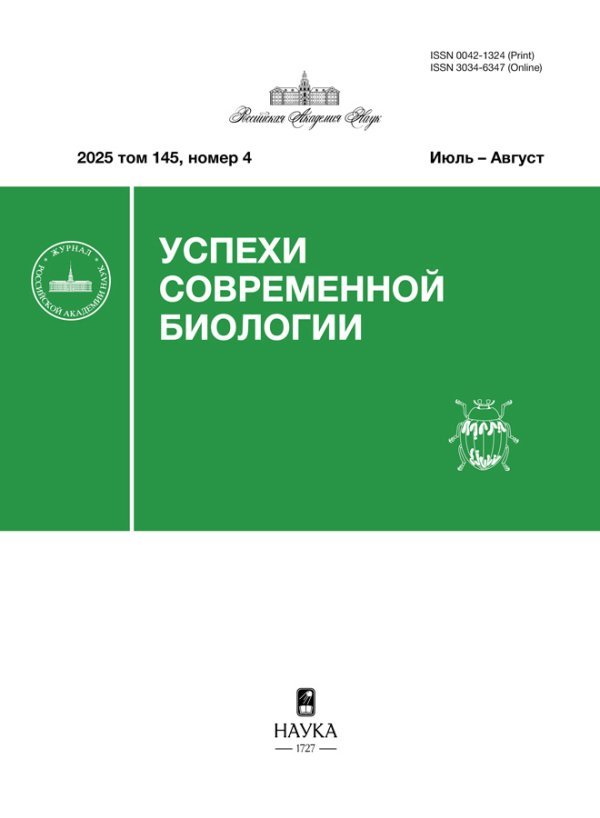Interrelations of Behavioral and Morphological Traits and Hair Cortisol Concentration in Goats (Capra hircus): a Correlation and Regression Analysis
- Authors: Svishcheva G.R.1,2, Saushkin N.Y.3, Titov E.A.3, Semina M.T.1, Stolpovsky Y.A.1, Samsonova Z.V.3, Piskunov A.K.1
-
Affiliations:
- Vavilov Institute of General Genetics, Russian Academy of Sciences
- Institute of Cytology and Genetics, Siberian Branch of the Russian Academy of Sciences
- Lomonosov Moscow State University
- Issue: Vol 145, No 4 (2025)
- Pages: 341-353
- Section: Articles
- Submitted: 24.11.2025
- Published: 15.12.2025
- URL: https://stomuniver.ru/0042-1324/article/view/696929
- DOI: https://doi.org/10.31857/S0042132425040045
- ID: 696929
Cite item
Abstract
This study investigates the relationships between hair cortisol levels, behavioral traits, and morphological characteristics in domestic goats (Capra hircus). Statistically significant correlations were found between hair cortisol concentration and coat color parameters, including pigmentation. A link between hair cortisol levels and stress resilience was confirmed using Quantitative Behavior Assessment (QBA). The results of this study may be applied in the development of non-invasive methods for assessing stress resilience in goats for livestock management purposes.
About the authors
G. R. Svishcheva
Vavilov Institute of General Genetics, Russian Academy of Sciences; Institute of Cytology and Genetics, Siberian Branch of the Russian Academy of Sciences
Author for correspondence.
Email: gulsvi@mail.ru
Moscow, Russia; Novosibirsk, Russia
N. Y. Saushkin
Lomonosov Moscow State University
Email: gulsvi@mail.ru
Moscow, Russia
E. A. Titov
Lomonosov Moscow State University
Email: gulsvi@mail.ru
Moscow, Russia
M. T. Semina
Vavilov Institute of General Genetics, Russian Academy of Sciences
Email: gulsvi@mail.ru
Moscow, Russia
Y. A. Stolpovsky
Vavilov Institute of General Genetics, Russian Academy of Sciences
Email: gulsvi@mail.ru
Moscow, Russia
Z. V. Samsonova
Lomonosov Moscow State University
Email: gulsvi@mail.ru
Moscow, Russia
A. K. Piskunov
Vavilov Institute of General Genetics, Russian Academy of Sciences
Email: gulsvi@mail.ru
Moscow, Russia
References
- Ataallahi M., Nejad J.G., Park K.H. Selection of appropriate biomatrices for studies of chronic stress in ani- mals: a review // J. Anim. Sci. Technol. 2022. V. 64. P. 621–639.
- Broom D.M., Fraser A.F. Domestic animal behaviour and welfare. Wallingford: CABI, 2015. 472 p.
- Bruckmaier R.M., Wellnitz O. Induction of milk ejection and milk removal in different production systems // J. Anim. Sci. 2008. V. 86 (Suppl. 13). P. 15–20.
- Comin A., Peric T., Corazzin M. et al. Hair cortisol as a marker of hypothalamic-pituitary-adrenal axis activation in Friesian dairy cows clinically or physiologically compromised // Livestock Sci. 2013. V. 152. P. 36–41.
- Ducrest A.-L., Keller L., Roulin A. Pleiotropy in the melanocortin system, coloration and behavioural syndromes // Trends Ecol. Evol. 2008. V. 23 (9). P. 502–510.
- Friedman J., Hastie T., Tibshirani R. Regularization paths for generalized linear models via coordinate descent // J. Stat. Softw. 2010. V. 33. P. 1–22.
- Ghassemi Nejad J., Ghaffari M.H., Ataallahi M. et al. Stress concepts and applications in various matrices with a focus on hair cortisol and analytical methods // Animals (Basel). 2022. V. 12. P. 3096.
- Gupta A., Yadav U., Bansal K.N. et al. Hair cortisol: a biomarker of chronic stress in animals and its association with reproduction // Anim. Reprod. Update. 2023. V. 3. P. 43–58.
- Heimbürge S., Kanitz E., Otten W. The use of hair cortisol for the assessment of stress in animals // Gen. Comp. Endocrinol. 2019. V. 270. P. 10–17.
- Ji R.-L., Tao Y.-X. Melanocortin-1 receptor mutations and pigmentation: insights from large animals // Progress in molecular biology and translational science. V. 189 / Ed. Y.-X. Tao. N.Y.: Acad. Press, 2022. P. 179–213. https://doi.org/10.1016/bs.pmbts.2022.02.013
- Kraetzl W.-D., Tančin V., Schams D. Inhibition of oxytocin release and milk let-down in postpartum primiparous cows is not abolished by naloxone // J. Dairy Res. 2001. V. 68 (4). P. 559–568.
- Likert R. A technique for the measurement of attitudes // Archives of Psychology. 1932. V. 22 (140). P. 5–55.
- Meyer J.S., Novak M.A. Minireview: hair cortisol: a novel biomarker of hypothalamic-pituitary-adrenocortical activity // Endocrinology. 2012. V. 153. P. 4120–4127.
- Möstl E., Palme R. Hormones as indicators of stress // Domest. Anim. Endocrinol. 2002. V. 23. P. 67–74.
- Roulin A. Condition-dependence, pleiotropy and the handicap principle of sexual selection in melanin-based colouration // Biol. Rev. Camb. Philos. Soc. 2016. V. 91 (2). P. 328–348.
- Russell E., Koren G., Rieder M., van Uum S. Hair cortisol as a biological marker of chronic stress: current status, future directions and unanswered questions // Psychoneuroendocrinology. 2012. V. 37. P. 589–601.
- Rutherford K.M., Donald R.D., Lawrence A.B., Wemelsfelder F. Qualitative behavioural assessment of emotionality in pigs // Appl. Anim. Behav. Sci. 2012. V. 139. P. 218–224.
- Samsonova J.V., Saushkin N.Y., Piskunov A.K. Examining cortisol ELISA in dried matrix spots: implications for analyte measurement and stability // Anal. Biochem. 2025. V. 703. P. 115878.
- Shapiro S.S., Wilk M.B. An analysis of variance test for normality (complete samples) // Biometrika. 1965. V. 52. P. 591–611.
- Stekhoven D.J., Bühlmann P. MissForest – non-parametric missing value imputation for mixed-type data // Bioinformatics. 2012. V. 28. P. 112–118.
- Tančin V., Bruckmaier R.M. Factors affecting milk ejection and removal during milking and suckling of dairy cows // Vet. Med. 2001. V. 46 (4). P. 108–118.
- Tavakol M., Dennick R. Making sense of Cronbach’s alpha // Int. J. Med. Educ. 2011. V. 2. P. 53.
- Wemelsfelder F., Hunter E.A., Mendl M.T., Lawrence A.B. The spontaneous qualitative assessment of behavioural expressions in pigs: first explorations of a novel methodology for integrative animal welfare measurement // Appl. Anim. Behav. Sci. 2000. V. 67. P. 193–215.
Supplementary files










